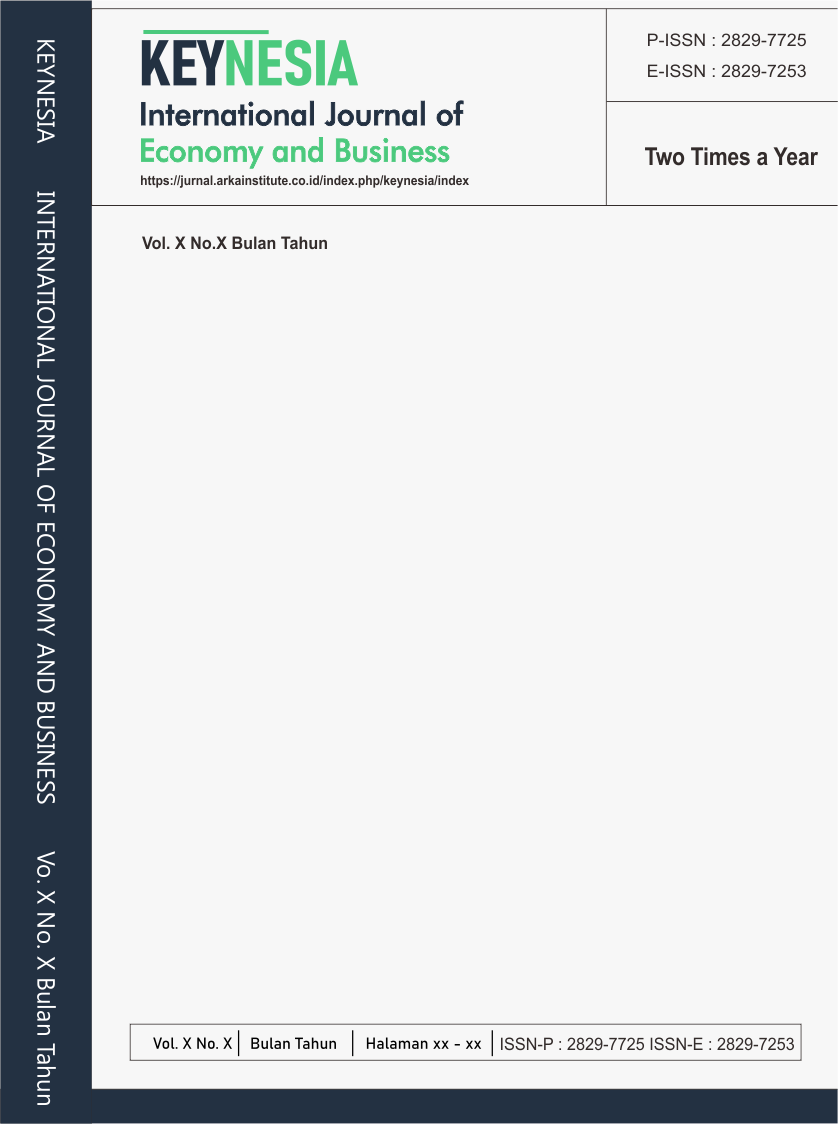The impact of mental health, work-life balance, and organizational support on burnout: Perspectives of employees in the creative industry
Main Article Content
Abstract
This study aims to analyze and understand the impact of mental health, work-life balance, and organizational support on burnout among employees in the creative industry. The phenomenon of burnout has become an increasingly serious issue among creative workers due to high work pressure, tight deadlines, and demands for continuous innovation. The research approach used is descriptive qualitative, with data collection methods through in-depth interviews with a number of employees from various creative industry sub-sectors, such as graphic design, advertising, and media production. The results show that good mental health plays an important role in reducing burnout levels; individuals with adequate stress management and psychological support tend to have higher emotional resilience. A balanced work-life balance helps employees maintain productivity without losing motivation and personal satisfaction. Meanwhile, organizational support has been shown to be a protective factor that strengthens work engagement and reduces the risk of emotional exhaustion. These findings reinforce the relevance of the model that explains that burnout occurs when work demands are not balanced with the availability of personal and organizational resources. This research confirms that the synergy between mental health, life balance, and organizational support is crucial for preventing burnout and creating a sustainable work environment in the creative industry.
Article Details
Section

This work is licensed under a Creative Commons Attribution-NonCommercial 4.0 International License.
References
Allen, T. D., Johnson, R. C., Kiburz, K. M., & Shockley, K. M. (2013). Work-Family Conflict and Flexible Work Arrangements: Deconstructing Flexibility. Personnel Psychology, 66(2), 345–376. https://doi.org/10.1111/peps.12012
Bakker, A. B., & Demerouti, E. (2007). The Job Demands-Resources model: State of the art. Journal of Managerial Psychology, 22(3), 309–328. https://doi.org/10.1108/02683940710733115
Bakker, A. B., & Demerouti, E. (2017). Job demands-resources theory: Taking stock and looking forward. Journal of Occupational Health Psychology, 22(3), 273–285. https://doi.org/10.1037/ocp0000056
Bakker, A. B., Demerouti, E., & Sanz-Vergel, A. (2023). Job Demands-Resources Theory: Ten Years Later. Annual Review of Organizational Psychology and Organizational Behavior, 10, 25–53. https://doi.org/10.1146/annurev-orgpsych-120920-053933
Caesens, G., & Stinglhamber, F. (2014). The relationship between perceived organizational support and work engagement: The role of self-efficacy and its outcomes. Revue Europeenne de Psychologie Appliquee, 64(5), 259–267. https://doi.org/10.1016/j.erap.2014.08.002
Carlasare, L. E., Wang, H., West, C. P., Trockel, M., Dyrbye, L. N., Tutty, M., Sinsky, C., & Shanafelt, T. D. (2024). Associations between Organizational Support, Burnout, and Professional Fulfillment among US Physicians during the First Year of the COVID-19 Pandemic. Journal of Healthcare Management, 69(5), 368–386. https://doi.org/10.1097/JHM-D-23-00124
Creswell, J. W., & Creswell, J. D. (2018). Research design: qualitative, quantitative, and mixed methods approaches (5th ed.). Los Angeles : SAGE.
Greenhaus, J. (2011). Work-Family Balance: A Review and Extension of the Literature. In Handbook of occupational health psychology (pp. 183–265).
Hesmondhalgh, D., & Baker, S. (2013). Creative labour: Media work in three cultural industries. Creative Labour: Media Work in Three Cultural Industries, 1–265. https://doi.org/10.4324/9780203855881
Khoirunnisa Amalia, J., & Parwoto, P. (2022). Work From Home: Measuring Work Life Balance, Job Burnout and Employee Happiness for Startup Company Employees in Jakarta. Journal Research of Social Science, Economics, and Management, 1(10). https://doi.org/10.59141/jrssem.v1i10.181
Kim, E. J., & Park, S. (2022). Unlearning in the workplace: Antecedents and outcomes. Human Resource Development Quarterly, 33(3), 273–296. https://doi.org/10.1002/hrdq.21457
Kvale, S., & Brinkmann, S. (2015). Interviews: Learning the Craft of Qualitative Research Interviewing (3rd ed.). Sage Publications.
Lee, R. L., & Ashforth, B. E. (1996). A meta-analytic examination of the correlates of the three dimensions of job burnout. Journal of Applied Psychology, 81(2), 123–133. https://doi.org/10.1037/0021-9010.81.2.123
Miles, M., Huberman, M., & Saldaña, J. (2013). Qualitative Data Analysis: A Methods Sourcebook. In Zeitschrift fur Personalforschung (Vol. 28).
Ren, Y., Li, G., Pu, D., He, L., Huang, X., Lu, Q., Du, J., & Huang, H. (2024). The relationship between perceived organizational support and burnout in newly graduated nurses from southwest China: the chain mediating roles of psychological capital and work engagement. BMC Nursing, 23(1). https://doi.org/10.1186/s12912-024-02386-x
Rhoades, L., & Eisenberger, R. (2002). Perceived organizational support: A review of the literature. Journal of Applied Psychology, 87(4), 698–714. https://doi.org/10.1037/0021-9010.87.4.698
Riyono, B., & Rezki, G. (2022). Burnout among working mothers: The role of work-life balance and perceived organizational support. Humanitas: Indonesian Psychological Journal, 19(August), 109–121. https://doi.org/10.26555/humanitas.v19i2.31
Sukandar Nur, H., Darmi Astuti, S., & Ikasari, H. (2025). Work-Life Balance, Organizational Support, And Job Burnout As Determinants of Turnover Intention In Generation Z. International Journal of Science, Technology & Management, 6(5), 1036–1042. https://doi.org/10.46729/ijstm.v6i5.1357
World Health Oganization. (2019, May 28). Burn-out an “occupational phenomenon”: International Classification of Diseases. World Health Rganization.
Yu, X., Wu, S., Chen, W., Zheng, W., Huang, M., Yang, L., & Zhou, S. (2021). Exploring the associations between perceived organizational support and job burnout among chinese academic journal editors: A moderated mediation model. International Journal of Environmental Research and Public Health, 18(22). https://doi.org/10.3390/ijerph182212167

